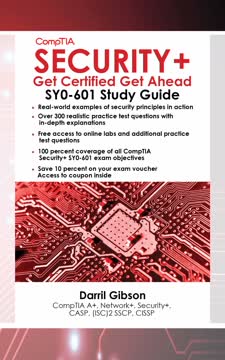Key Takeaways
1. Security is a Balancing Act: Confidentiality, Integrity, and Availability
Confidentiality prevents the unauthorized disclosure of data.
The CIA Triad. Security isn't just about locking things down; it's about finding the right balance between three core goals: confidentiality, integrity, and availability. Confidentiality ensures that only authorized users can access sensitive information. Integrity ensures that data remains accurate and untampered. Availability ensures that systems and data are accessible when needed.
Real-world examples. Consider a hospital:
- Confidentiality: Patient records must be kept private.
- Integrity: Medical data must be accurate and reliable.
- Availability: Doctors and nurses must have access to patient data when needed.
Balancing act. Achieving all three goals simultaneously can be challenging. For example, strong encryption can enhance confidentiality but may impact availability if it slows down system performance. Security professionals must constantly make trade-offs to find the right balance.
2. Controls are Your Shield: Technical, Administrative, and Physical
Technical controls use technology to reduce vulnerabilities.
Three lines of defense. Security controls are the actions and tools used to mitigate risks. They fall into three main categories: technical, administrative, and physical. Technical controls use technology, such as firewalls and encryption. Administrative controls use policies and procedures, such as risk assessments and training. Physical controls are tangible measures, such as locks and security guards.
Examples of controls:
- Technical: Encryption, antivirus software, intrusion detection systems (IDSs), firewalls
- Administrative: Risk assessments, security policies, training programs
- Physical: Security guards, fences, locks, cameras
Layered approach. Effective security relies on a combination of all three types of controls. For example, a strong password policy (administrative) is more effective when combined with password complexity requirements (technical) and physical security measures to prevent shoulder surfing (physical).
3. Virtualization: A Powerful Tool, But Not Without Risks
Virtualization provides increased availability because it is much easier to rebuild a virtual server than a physical server after a failure.
Flexibility and efficiency. Virtualization allows you to run multiple operating systems on a single physical machine, providing flexibility and reducing costs. It also makes it easier to test new security controls and recover from failures. However, it introduces new security risks.
Types of virtualization:
- Type I hypervisors run directly on the hardware (bare-metal).
- Type II hypervisors run within an operating system.
- Container virtualization runs applications in isolated cells.
Risks of virtualization:
- VM escape: Attackers can gain access to the host system from a virtual machine.
- VM sprawl: Unmanaged virtual machines can consume resources and create vulnerabilities.
- Data leakage: Virtual machines are just files and can be easily copied.
4. Command Line: Your Secret Weapon for Network Insight
You can use tracert to track packet flow through a network and if an extra router has been added to your network, tracert will identify it.
Essential tools. Command-line tools provide valuable insights into network behavior and system configurations. They are essential for troubleshooting and security assessments.
Key command-line tools:
ping: Tests connectivity and name resolution.tracert: Traces the path of network packets.ipconfig/ifconfig/ip: Displays network configuration information.netstat: Shows active network connections and listening ports.arp: Displays the Address Resolution Protocol (ARP) cache.
Practical applications:
- Use
pingto check if a server is reachable. - Use
tracertto identify unauthorized routers. - Use
netstatto detect suspicious connections. - Use
ipconfigto verify network settings.
5. Authentication: More Than Just a Password
Authentication should be increased, such as by forcing users to use stronger passwords.
Beyond usernames. Authentication is the process of verifying a user's identity. It goes beyond just usernames and passwords. It includes multiple factors, such as something you know, something you have, something you are, somewhere you are, and something you do.
Authentication factors:
- Something you know: Passwords, PINs
- Something you have: Smart cards, tokens
- Something you are: Biometrics (fingerprints, retina scans)
- Somewhere you are: Geolocation
- Something you do: Gestures, keystroke dynamics
Strong authentication. Multifactor authentication (MFA) combines two or more factors for increased security. For example, using a password and a code from a mobile app.
Authentication services:
- Kerberos: Used in Windows domains.
- LDAP: Used for directory services.
- RADIUS: Used for remote access.
6. Network Security: Layers Upon Layers
A demilitarized zone (DMZ) is a logical buffer zone for servers accessed from public networks such as the Internet, and it provides a layer of security for servers in the DMZ.
Zones and boundaries. Network security involves creating zones and boundaries to protect sensitive resources. A demilitarized zone (DMZ) is a buffer zone for servers accessed from public networks. Virtual local area networks (VLANs) segment traffic within a network.
Key network devices:
- Firewalls: Control traffic based on rules.
- Intrusion detection systems (IDSs): Monitor for suspicious activity.
- Intrusion prevention systems (IPSs): Block attacks in progress.
- Switches: Connect devices within a network.
- Routers: Connect different networks.
- Proxies: Filter and cache web traffic.
Wireless security. Wireless networks require strong encryption protocols, such as WPA2 with CCMP. 802.1x servers provide port-based authentication.
7. Cryptography: The Art of Secrets and Trust
Encryption scrambles data to make it unreadable by unauthorized personnel.
Protecting data. Cryptography is the art of protecting information using mathematical algorithms. It includes hashing, encryption, and digital signatures. Hashing provides integrity. Encryption provides confidentiality. Digital signatures provide authentication, non-repudiation, and integrity.
Symmetric vs. asymmetric encryption:
- Symmetric: Uses the same key for encryption and decryption (e.g., AES, DES).
- Asymmetric: Uses a public key for encryption and a private key for decryption (e.g., RSA, Diffie-Hellman).
Key cryptographic concepts:
- Hashing: Creates a fixed-size string of bits from data.
- Encryption: Scrambles data to make it unreadable.
- Digital signatures: Provide authentication and integrity.
- Key stretching: Makes passwords more difficult to crack.
- Steganography: Hides data within other data.
8. Policies: The Foundation of a Secure Organization
A tried-and-true method of repeating key information is to take notes when you’re first studying the material and then rewrite the notes later.
Guiding principles. Security policies are written documents that define an organization's security goals and expectations. They provide a framework for implementing security controls and managing risks.
Key policy areas:
- Acceptable use policy (AUP): Defines proper system usage.
- Mandatory vacations: Help detect fraud.
- Separation of duties: Prevents any single person from controlling a critical process.
- Job rotation: Ensures employees are cross-trained.
- Clean desk policy: Protects sensitive data.
- Data retention policies: Define how long data is retained.
Personnel management. Policies also address personnel management, including background checks, non-disclosure agreements (NDAs), and exit interviews.
9. Incident Response: Plan, Prepare, and React
The incident response process includes preparation, identification, containment, eradication, recovery, and lessons learned.
Structured approach. Incident response is a structured process for handling security incidents. It includes preparation, identification, containment, eradication, recovery, and lessons learned.
Key elements of incident response:
- Incident response plan (IRP): Defines roles, responsibilities, and procedures.
- Cyber-incident response team: A group of trained personnel.
- Order of volatility: Collect evidence from most volatile to least volatile.
- Chain of custody: Documents the handling of evidence.
- Legal hold: Preserves data for legal purposes.
Forensic procedures:
- Capture system images.
- Collect network traffic and logs.
- Take hashes of files.
- Interview witnesses.
10. Data Protection: From Cradle to Grave
Protecting Confidentiality with Encryption
Data lifecycle. Data protection involves securing data throughout its lifecycle, from creation to destruction. This includes data-at-rest, data-in-transit, and data-in-use.
Data protection methods:
- Encryption: Protects confidentiality.
- Data loss prevention (DLP): Prevents data exfiltration.
- Access controls: Restrict access to authorized users.
- Data sanitization: Removes data from storage media.
- Data retention policies: Define how long data is retained.
Data roles:
- Data owner: Has overall responsibility for the data.
- Data steward/custodian: Handles routine tasks to protect data.
- Privacy officer: Ensures compliance with privacy laws.
Last updated:
FAQ
What is CompTIA Security+ Get Certified Get Ahead: SY0-601 Study Guide by Darril Gibson about?
- Comprehensive Exam Preparation: The book is a thorough study guide covering 100% of the CompTIA Security+ SY0-601 exam objectives, including threats, vulnerabilities, risk management, cryptography, and more.
- Practical and Updated Content: It provides over 300 practice questions, online labs, and free resources to help readers prepare for the exam and apply IT security knowledge in real-world scenarios.
- Balanced for All Learners: Designed for both classroom students and self-learners, it balances detailed explanations with clarity, avoiding unnecessary complexity while covering challenging topics.
Why should I read CompTIA Security+ Get Certified Get Ahead: SY0-601 Study Guide by Darril Gibson?
- Proven Teaching Methods: Darril Gibson leverages years of teaching experience and student feedback to address difficult concepts and exam changes effectively.
- Vendor-Neutral and Up-to-Date: The guide covers security topics across Microsoft, Linux, Apple iOS, and Android, reflecting the latest exam objectives and industry trends.
- Structured Exam Success Strategies: It offers a clear study plan, including pre-assessment, chapter reviews, practice questions, and post-assessment exams, plus advice on goal setting and handling performance-based questions.
What are the key takeaways from CompTIA Security+ Get Certified Get Ahead: SY0-601 Study Guide by Darril Gibson?
- Comprehensive Security Knowledge: Readers gain a solid understanding of core security principles, risk management, cryptography, network security, and incident response.
- Practical Application: The book emphasizes real-world scenarios, hands-on labs, and actionable advice for both exam success and IT security careers.
- Exam Readiness: With detailed practice questions, explanations, and online resources, readers are well-prepared to pass the Security+ exam on their first attempt.
What are the core security goals and principles explained in Darril Gibson’s study guide?
- CIA Triad: The book introduces confidentiality, integrity, and availability as foundational security goals, explaining how each protects data and systems.
- Supporting Methods: Techniques like encryption, access controls, hashing, digital signatures, redundancy, and environmental controls are detailed for maintaining these goals.
- Non-Repudiation and Obfuscation: Digital signatures ensure actions cannot be denied, while steganography and obfuscation help hide sensitive data.
How does Darril Gibson define and address risk management and control types in the Security+ study guide?
- Risk Definition: Risk is described as the likelihood of a threat exploiting a vulnerability, potentially impacting confidentiality, integrity, or availability.
- Control Categories: Controls are classified by implementation (technical, administrative, physical) and by goal (preventive, detective, corrective, deterrent, compensating), with examples for each.
- Risk Mitigation: The guide emphasizes reducing risk through appropriate controls, acknowledging that no control is foolproof but can significantly lower risk.
What are the main types of threats, attacks, and social engineering tactics covered in the study guide?
- Malware and Attack Types: The book details viruses, worms, Trojans, ransomware, rootkits, spyware, botnets, and logic bombs, explaining their behaviors and defenses.
- Social Engineering Techniques: Phishing, spear phishing, whaling, vishing, impersonation, tailgating, and other psychological tactics are explained with real-world examples.
- Mitigation Strategies: User education, digital signatures, antivirus software, and layered security are highlighted as key defenses against these threats.
How does Darril Gibson’s study guide explain authentication, identity management, and access control models?
- Authentication Factors: The book covers five authentication factors—something you know, have, are, do, and where you are—emphasizing multi-factor authentication for strong security.
- Authentication Services: Protocols like Kerberos, NTLM, LDAP/LDAPS, SAML, OAuth, and OpenID Connect are explained for managing identity and access.
- Access Control Models: Role-Based (RBAC), Rule-Based, Discretionary (DAC), Mandatory (MAC), and Attribute-Based (ABAC) models are described, with use cases and security implications.
What networking and wireless security concepts are emphasized in Darril Gibson’s Security+ study guide?
- Network Devices and Protocols: The guide explains switches, routers, firewalls, proxies, load balancers, and protocols like TCP/IP, ICMP, ARP, and NDP.
- Wireless Security: WPA, WPA2, TKIP, CCMP, and EAP variants are covered, with a focus on using WPA2 with CCMP for strong wireless security.
- Common Attacks and Defenses: DNS poisoning, ARP poisoning, rogue APs, evil twins, jamming, and Bluetooth exploits are described, along with mitigation strategies.
How does the study guide by Darril Gibson address virtualization, cloud computing, and mobile device security?
- Virtualization Concepts: The book explains hypervisors, VM escape, VM sprawl, and containerization, highlighting both benefits and security risks.
- Cloud Models: SaaS, PaaS, IaaS, and deployment models (public, private, community, hybrid) are detailed, including shared security responsibilities.
- Mobile Device Management: Features like encryption, containerization, geofencing, remote wipe, and deployment models (BYOD, COPE, CYOD, VDI) are discussed for securing mobile environments.
What cryptography, encryption, and PKI concepts are detailed in Darril Gibson’s Security+ study guide?
- Symmetric and Asymmetric Encryption: The book covers AES, DES, 3DES, Blowfish, Twofish, RC4, RSA, Diffie-Hellman, and ECC, explaining their uses and strengths.
- Hashing and Digital Signatures: MD5, SHA families, HMAC, and RIPEMD are explained for integrity and authentication, with digital signatures providing non-repudiation.
- PKI and Certificates: The guide details PKI components, certificate types and formats, validation methods (CRL, OCSP), and the importance of certificate management.
How does Darril Gibson’s study guide cover risk assessment, vulnerability scanning, and penetration testing?
- Risk Assessment Types: Quantitative (monetary values) and qualitative (likelihood and impact) assessments are explained for evaluating organizational risk.
- Vulnerability Scanning: Described as a passive, non-intrusive process to identify weaknesses and misconfigurations without exploiting them.
- Penetration Testing: An active, intrusive process to exploit vulnerabilities, with black box, white box, and gray box testing approaches detailed.
What incident response, business continuity, and personnel management strategies are recommended in Darril Gibson’s Security+ study guide?
- Incident Response Process: Preparation, identification, containment, eradication, recovery, and lessons learned are outlined for effective incident handling.
- Business Continuity and Disaster Recovery: Business Impact Analysis (BIA), Recovery Time Objective (RTO), Recovery Point Objective (RPO), and recovery site types (hot, warm, cold) are explained.
- Personnel Policies: Acceptable Use Policy (AUP), mandatory vacations, separation of duties, job rotation, clean desk policy, and ongoing security awareness training are recommended to reduce insider threats and support compliance.
Review Summary
CompTIA Security+ Get Certified Get Ahead is highly praised by readers for its clear explanations and comprehensive coverage of exam topics. Many reviewers found it instrumental in passing the Security+ exam on their first attempt. The book's logical organization and practical examples make complex concepts easier to understand. Readers appreciate the included online resources and practice questions. While some minor typos were noted, the overall consensus is that this is an excellent study resource for the Security+ certification, with many considering it the best book available on the subject.
Similar Books
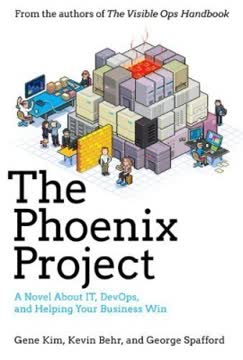


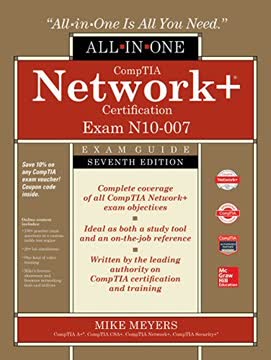

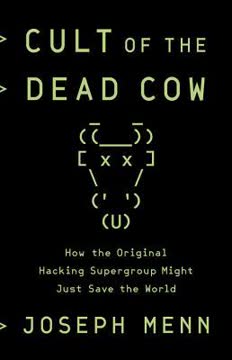

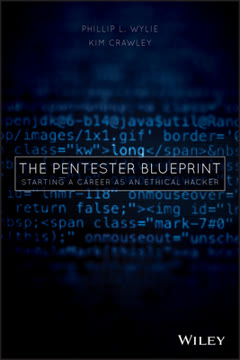


Download PDF
Download EPUB
.epub digital book format is ideal for reading ebooks on phones, tablets, and e-readers.
